Understanding GPT Partitions
If you “What is GPT Partition?” Simply put GPT Partition or GUID Partition table is a standard partitioning scheme in modern computers (Hard drives and SSDs). It is a method of dividing the storage space in the drive into individual disks, due to its obvious advantages over MBR the GPT partitions are widely adapted.
GPT partitions have features like CRC32 checksums, support larger drives, compatible with devices that use older MBR partitions as well.
How to Recover GPT Partition in Windows and Mac?
Until the data gets overwritten there is an excellent chance of GPT partition recovery, all you need is reliable methods to get the partition back, Try recovering the partition with an easy-to-use data recovery software.
In 2024, data recovery software is everywhere, so choosing an efficient and reliable one that causes no further damage to your files could be quite a task.
We suggest the Yodot Hard Drive Recovery for the best results from the first scan as it supports all the major filesystem formats like NTFS, APFS, eXFAT, and even from a RAW Drive on both Windows and Mac.
Restore GPT Partition Table Using Yodot Hard Drive Recovery Software
Steps To Perform GPT Partition Recovery
The software interface is identical on both Windows and Mac, You can follow the steps below even if you are using a Mac computer.
Step 1: Download and install the Yodot Hard Drive Recovery
Step 2: After installing the software, open the application and select partition recovery.
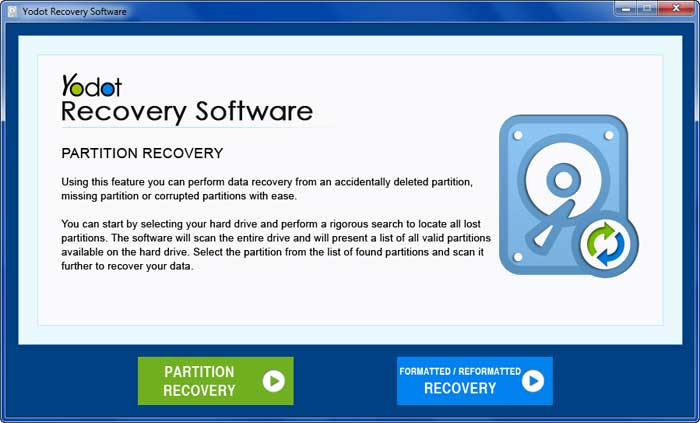
Step 3: Select the GPT partitioned hard drive from the list of drives. Then, click Next. After that, choose the partition you want to recover, and click Next to start the recovery process.
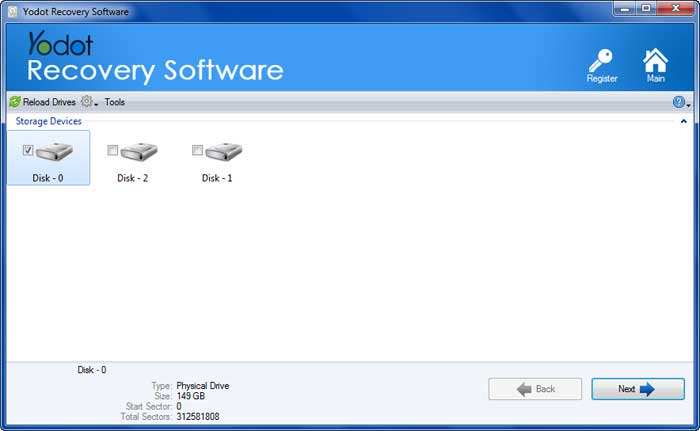
Step 4: Mark the folders and files you want to restore using the Data View or File Type View tabs.
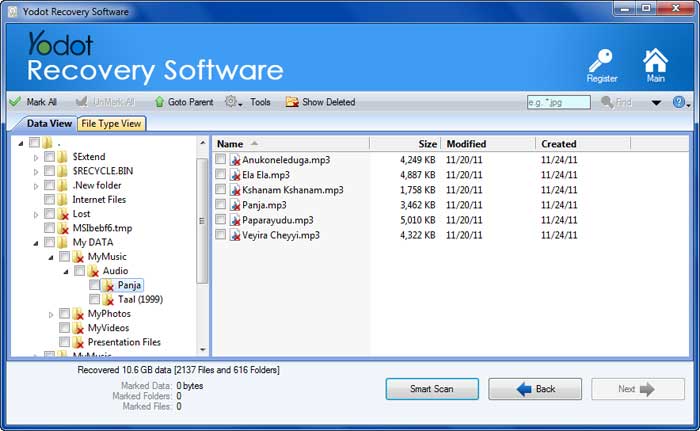
Step 5: preview the recovered GPT partition files using the Preview option.

Step 6: Finally, save the retrieved files to the desired destination using the Save button.
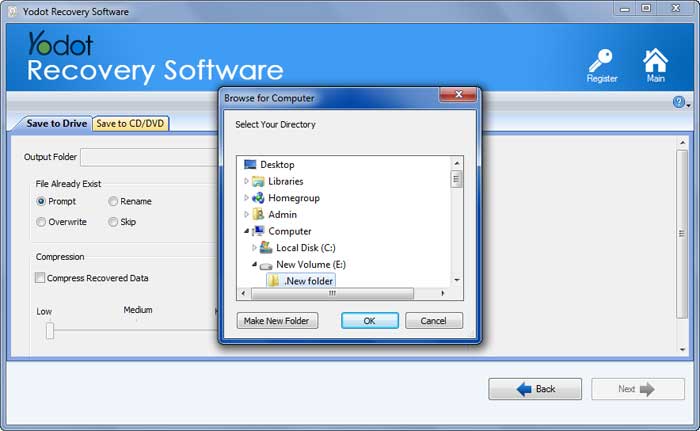
NOTE: It is highly recommended that you save it in a new location on a different disk to avoid losing it again.
You can choose to recover the GPT partition using any open-source data recovery software like Testdisk to perform GPT partition recovery, make sure to check their credibility and success rate in doing the job.
If your GPT partition is having minor corruption issues preventing you from accessing the data on the partition, choose to repair using the built-in utilities on your device.
Repair Corrupt GPT Partition
Follow the solutions listed below to repair the corrupt GPT partition using the Command prompt Window.
NOTE: This process can potentially overwrite the data.
1. DiskPart
Step 1: Launch the Command Prompt by clicking on Run as administrator.
Step 2: Type the disk part and hit Enter to start using the DiskPart tool.
Step 3: Enter List disk to view all connected disks and find the one with the missing GPT partition.
Step 4: Choose the disk by typing select disk R (replace R with the number of the disk).
Step 5: Type list partition to see all the partitions on the chosen disk and identify the absent GPT partition.
Step 6: Type recovers from initiating the recovery process.
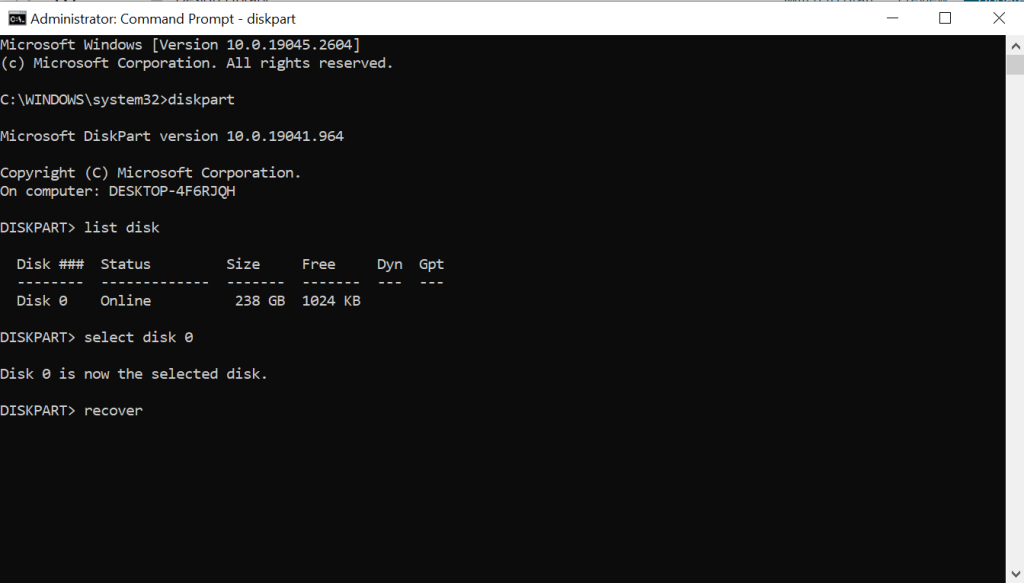
Step 7: Now, wait for the recovery process to complete.
Step 8: Type exit to exit the DiskPart tool.
Step 9: Check Disk Management or File Explorer to see if the GPT partition is accessible.
2. Chkdsk
Step 1: Open Command Prompt as Administrator
Step 2: Type: Chkdsk E: /F (Repalace E with your partition letter) and Press Enter
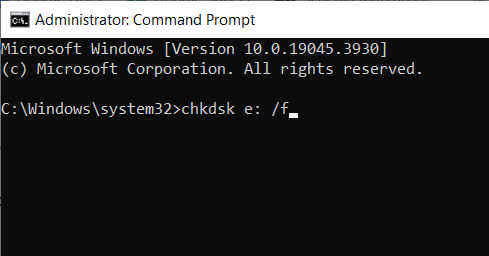
Once the scanning is completed check if you can access the files and folders in the GPT partition.
BONUS: What Is The Difference Between GPT And MBR?
| GPT | MBR |
| GPT uses a 64-bit disk signature to identify a disk uniquely. | MBR uses a 32-bit disk signature. |
| GPT stores partition data at the beginning and end of the disk for redundancy. | MBR only stores partition data at the beginning of the disk. |
| GPT includes a protective MBR to prevent legacy partitioning tools from modifying the disk. | MBR does not provide this protection to prevent legacy partitioning tools from modifying the disk. |
| GPT allows for the use of larger sector sizes. | MBR is limited to 512-byte sectors. |
| GPT stores partition data in a data structure called partition entries. | MBR stores partition data in a partition table. |
You can also find a secure MBR area in the GPT partition table for backward compatibility with disk management utilities to run MBR. However, despite advancements in partition schemes, even GPT partitions don’t escape from unforeseen data loss scenarios, some of the common reasons are listed below.
Common Reasons Behind GPT Partition Loss
There can be several reasons why a GPT (GUID Partition Table) partition loss may occur.
| Operating system errors: | Errors or bugs in the operating system can also cause GPT partition loss. This can happen during installation or when performing system updates. |
| Disk errors: | Physical damage to the hard drive, bad sectors, or other disk errors can lead to GPT partition loss. These errors can occur due to natural wear and tear, power surges, or other issues. |
| Accidental deletion or formatting: | One of the common reasons for GPT partition loss is accidental deletion or formatting of the partition. This can happen due to human error, software malfunction, or viruses/malware. |
| Software conflicts: | Some conflicts between software programs or updates can cause GPT partition loss. This is more likely to occur when installing or updating system-level software which could lead to showing as GPT protective partition. |
| Malware attacks: | Viruses, malware, or hacking attempts can cause GPT partition loss. These attacks can be aimed at damaging the hard drive or stealing data. |
Conclusion
We hope the solutions in this article helped you perform GPT partition recovery from almost all data loss cases, corruption, deletion, etc.
To prevent GPT partition loss, it’s important to regularly back up important data and keep your software and operating systems up to date. Additionally, using a reliable antivirus program and avoiding downloading infected software can help protect against malware attacks.
Frequently Asked Questions:
On Windows, you can check the partition style using Disk Management. Right-click on the disk and select Properties > Volumes > Partition style. You can check it in Disk Utility on macOS by selecting the drive and clicking the Info button.
Yes, converting the GPT partition to MBR using disk management tools is possible. Still, it will erase all the data on the disk.
Yes, it is possible to convert MBR partition to GPT, but it requires a clean operating system installation.
You can recover a lost or deleted GPT partition using data recovery software such as Yodot Recovery; Keeping any new data off the GPT partition until it’s recovered is essential. The success of recovery depends on various factors, such as the extent of damage and the amount of data overwritten on the disk.